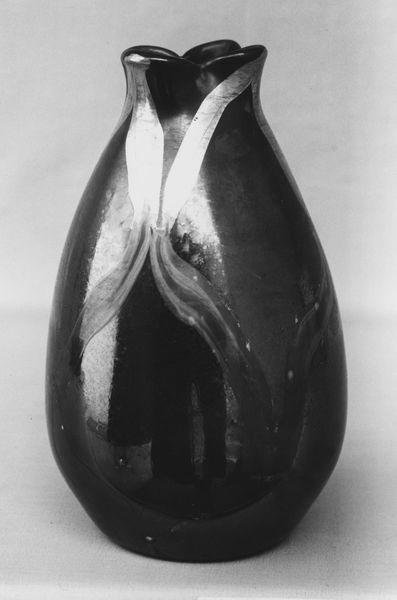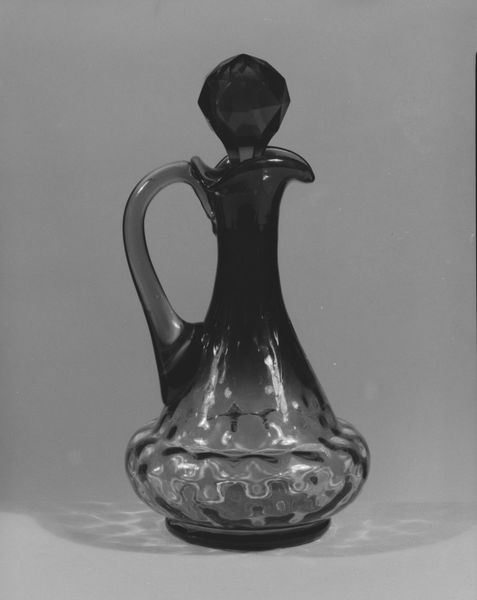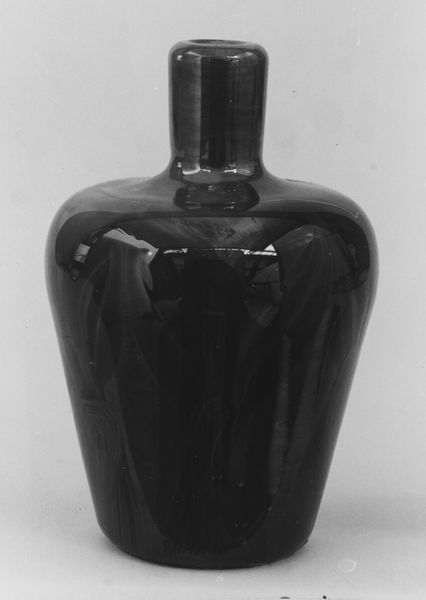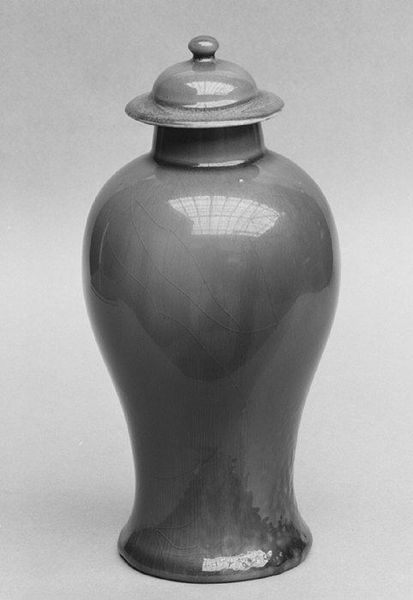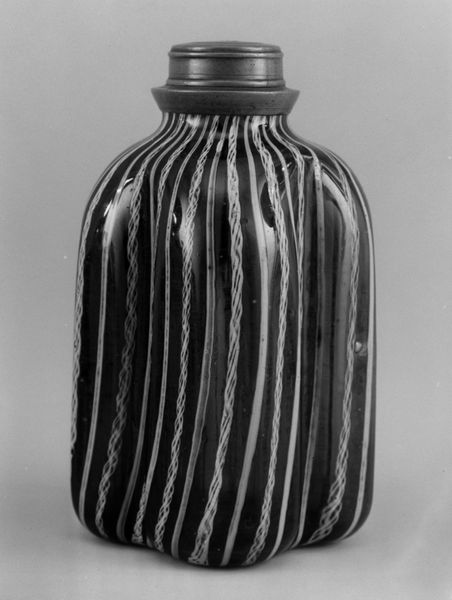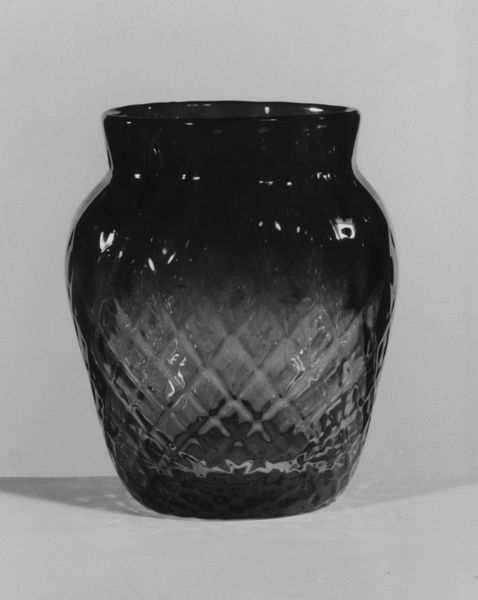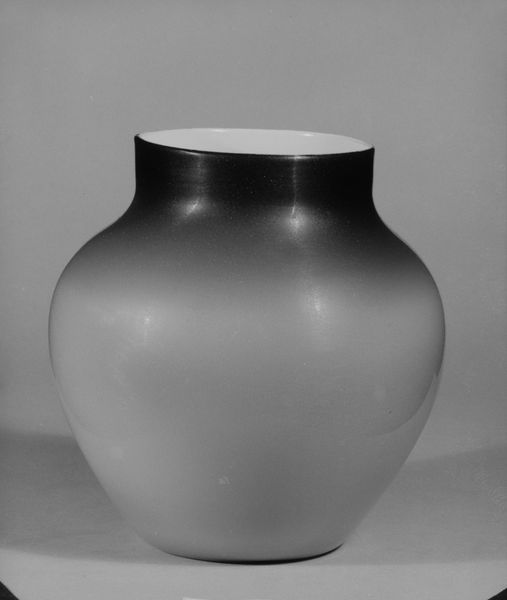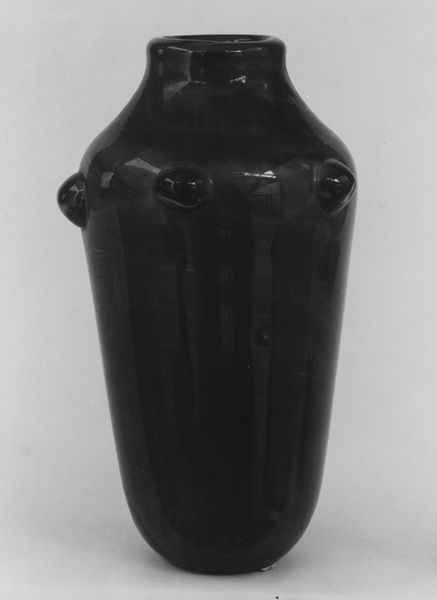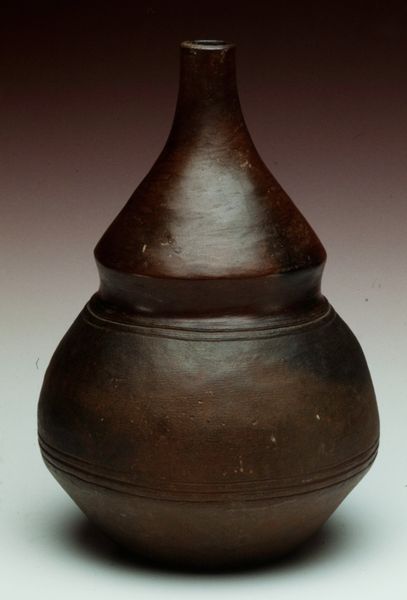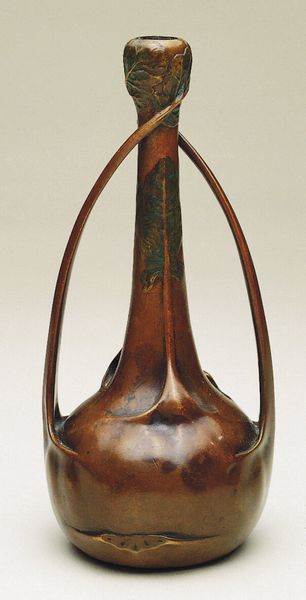
glass, sculpture
#
art-nouveau
#
sculpture
#
glass
#
sculpture
#
united-states
Dimensions: H. 7 5/8 in. (19.4 cm)
Copyright: Public Domain
Editor: Here we have Louis Comfort Tiffany’s "Vase," crafted between 1893 and 1896, currently residing at the Metropolitan Museum of Art. It's a striking glass sculpture with sinuous lines; it reminds me of organic forms found in nature. How do you interpret this work, particularly within its historical context? Curator: It's crucial to recognize Tiffany's work as situated within the broader social and political currents of the Gilded Age. The emphasis on handcrafted, unique objects can be seen as a response to increasing industrialization and mass production, a yearning for a connection to nature that was rapidly disappearing, particularly for the burgeoning urban classes. How does the vase’s organic form, abstracted as it is, speak to anxieties around industrial progress, perhaps a longing for an imagined pastoral past? Editor: I hadn't considered that tension. The vase does feel deliberately removed from the industrialized world in its shape and the focus on the maker's hand. I'm wondering how much it draws on the women and men from the Tiffany Glass and Decorating Company? Curator: That’s an important question to ask! The narratives surrounding art history have often failed to adequately address or erase the contributions of a diverse range of artists and artisans. A closer look at who was involved in the glass-making process at Tiffany studios allows for an examination into labor practices, artistic collaborations, and the socio-economic factors at play during the creation of these seemingly ‘unique’ works. How might understanding these submerged narratives complicate or enrich our interpretation of the object? Editor: It's changed my perception of the "Vase" from a purely aesthetic object to something charged with the complexities of its time. I hadn't considered its production involving marginalized groups of artisans. Curator: Exactly! By bringing together social history and visual analysis, we can develop more comprehensive readings that acknowledges art as deeply intertwined with broader cultural struggles.
Comments
No comments
Be the first to comment and join the conversation on the ultimate creative platform.
